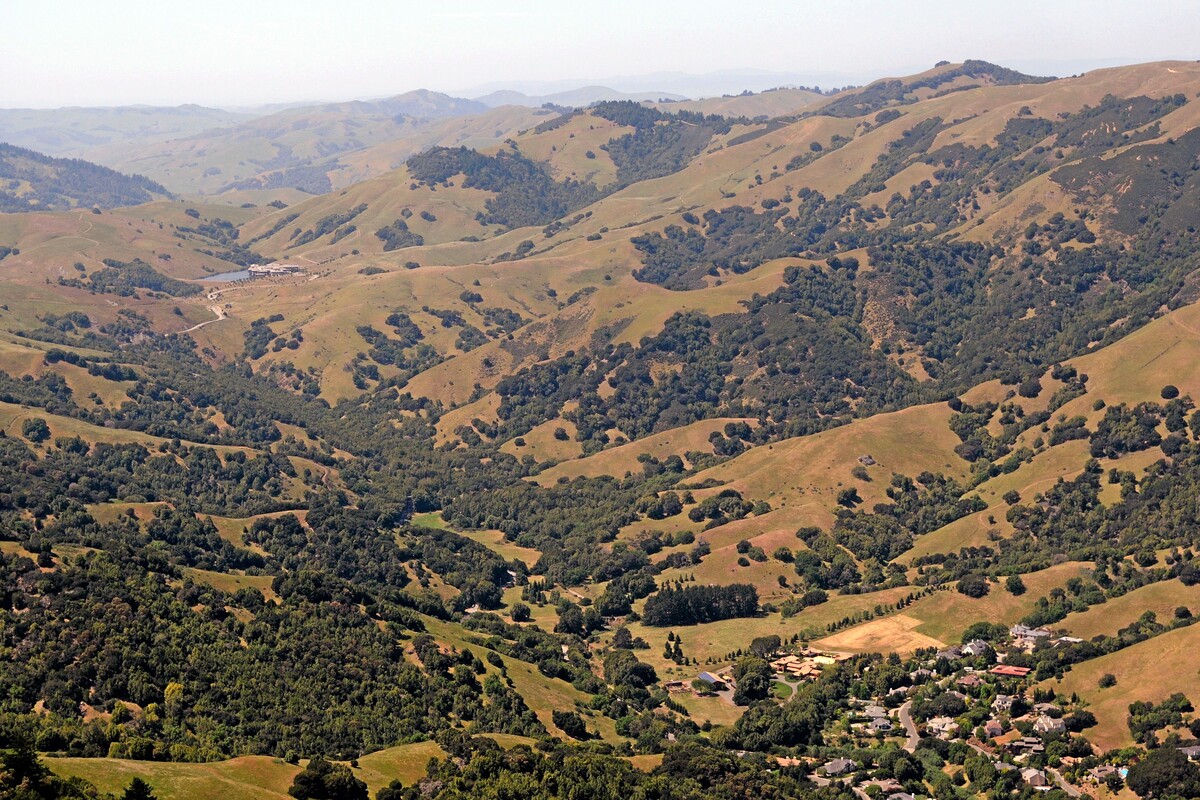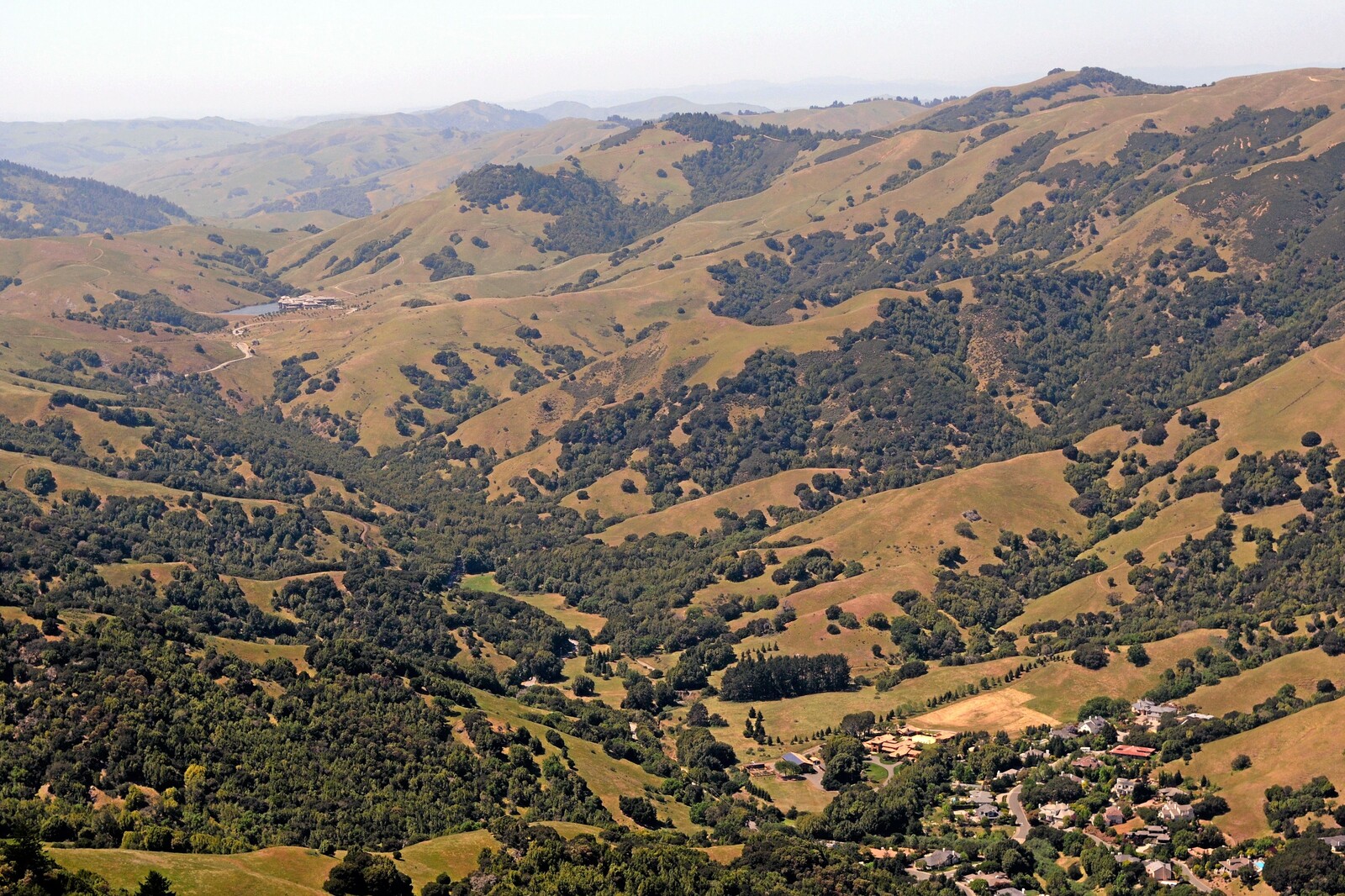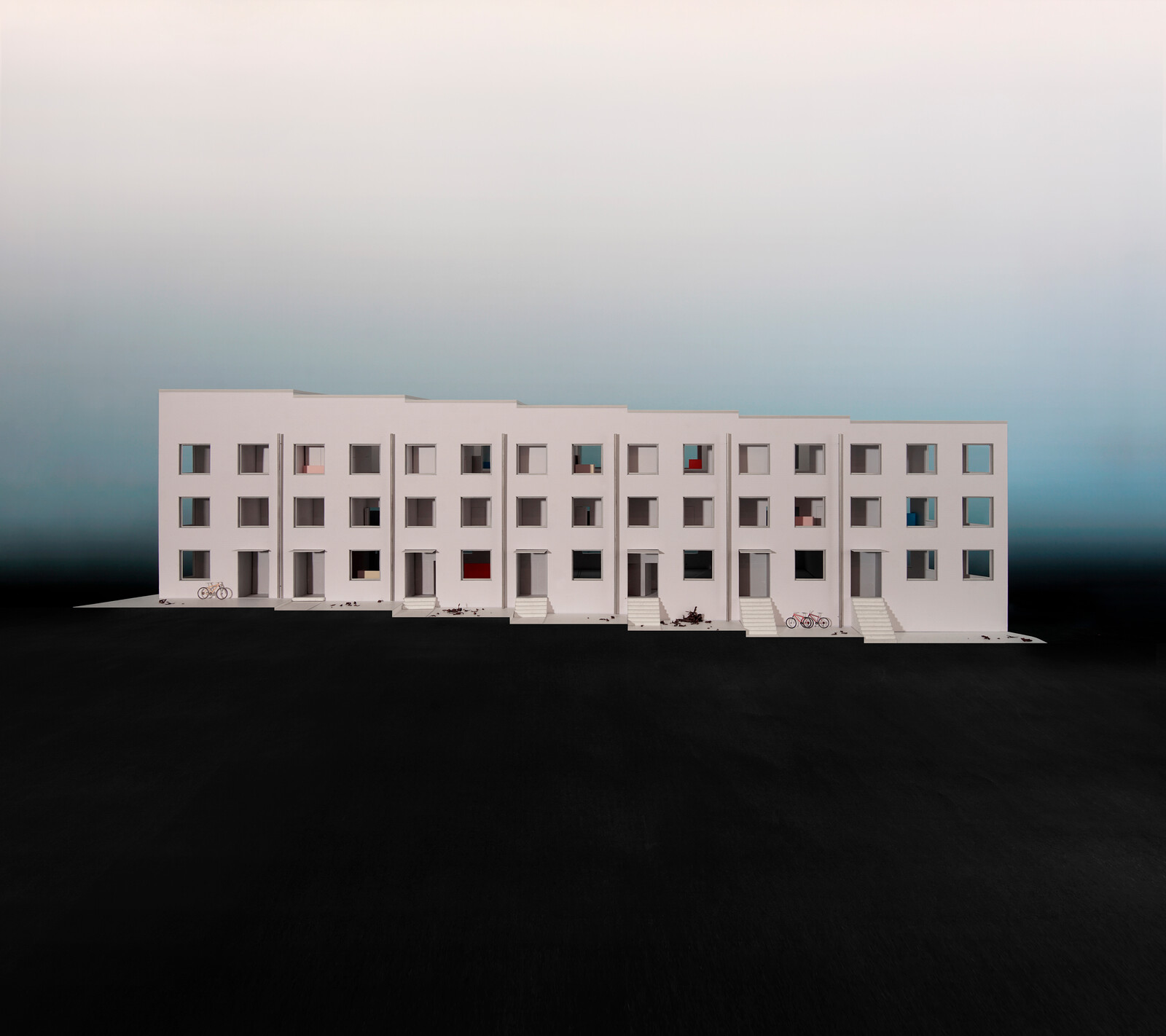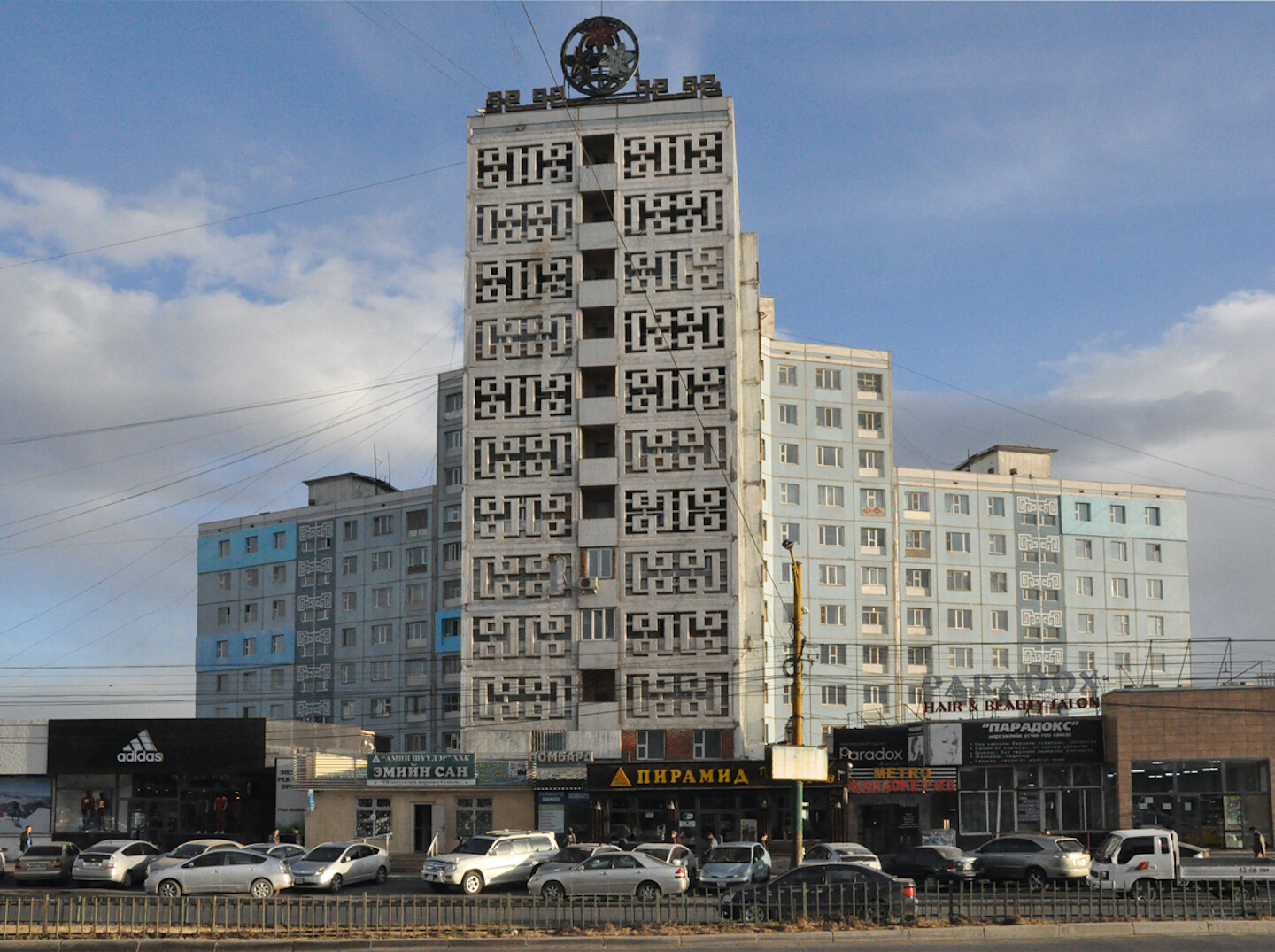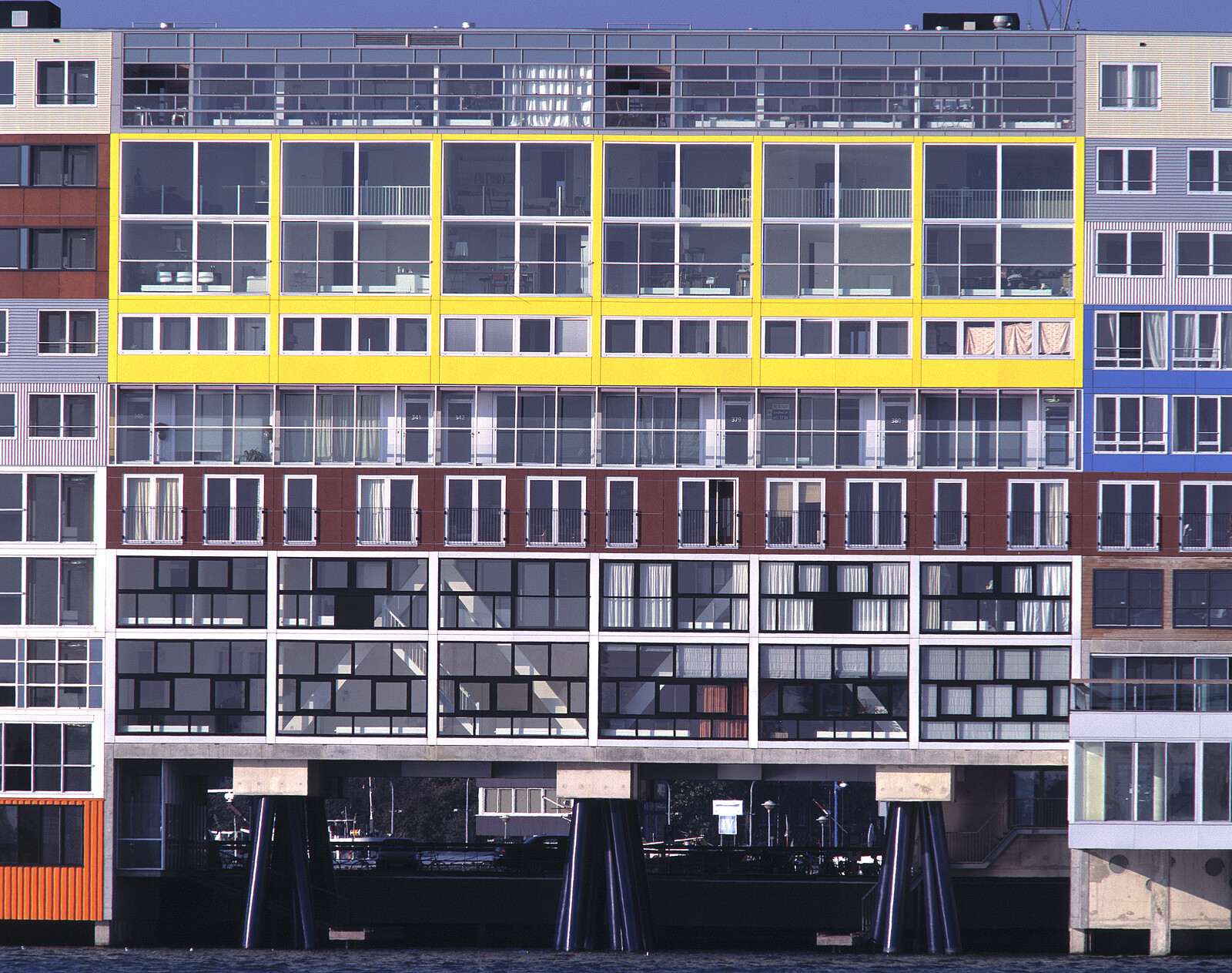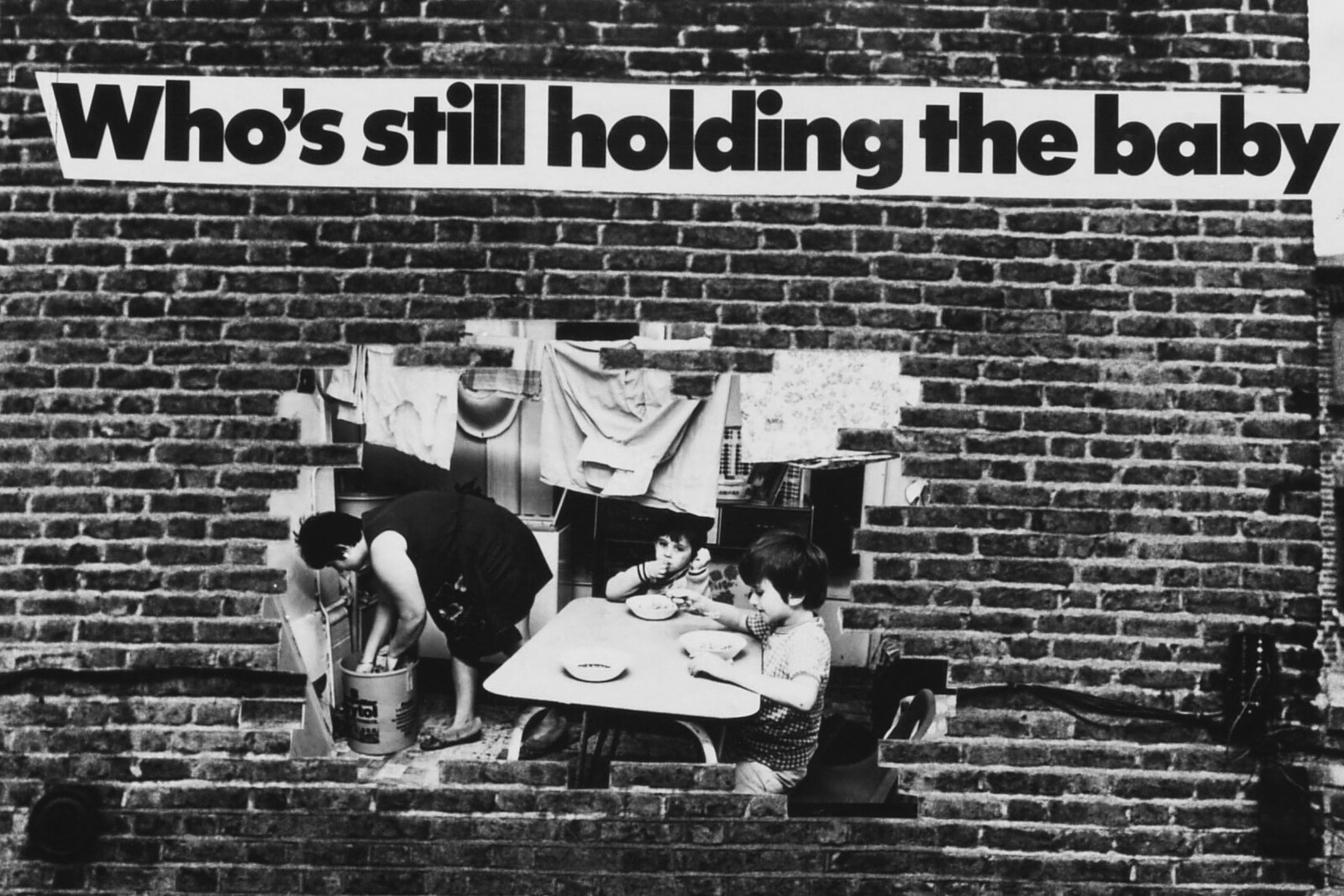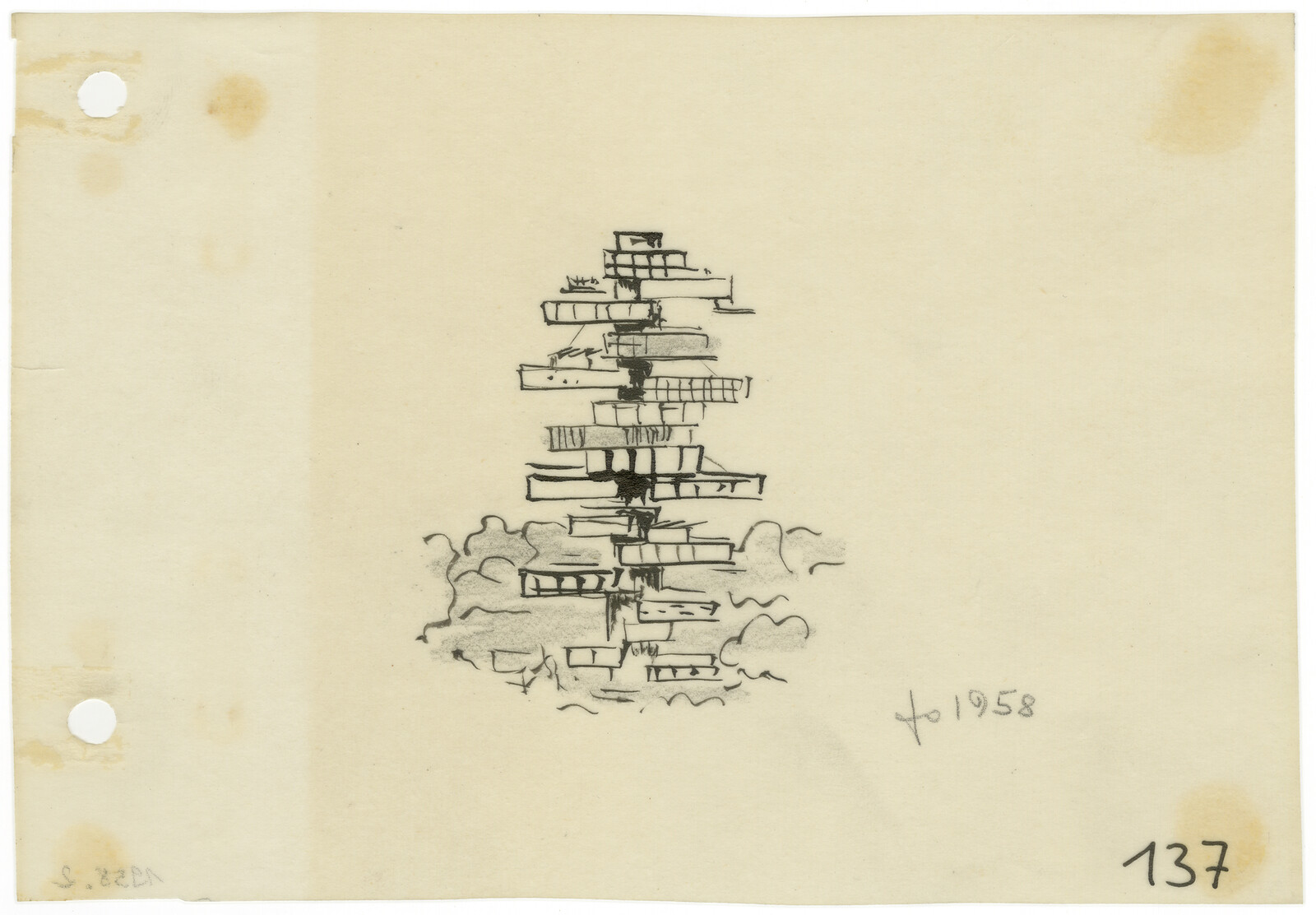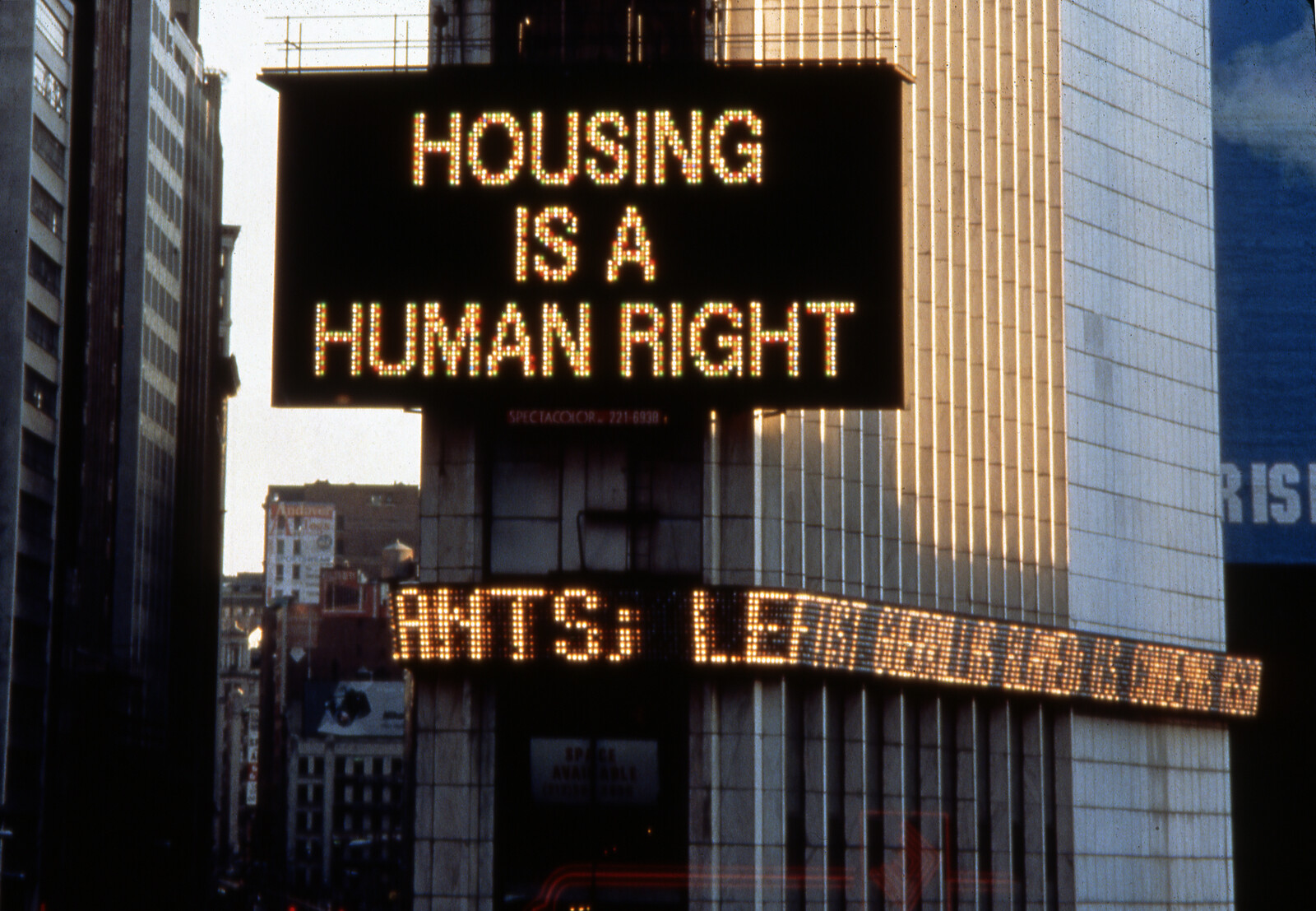Grady Ranch is a vast, 1,039-acre estate in the rolling hills northwest of San Rafael, CA. The Ranch has been at the center of a controversy since 2015, one that involves 224 units of affordable housing spread over fifty-two acres, a community center, a pool, a small farm, and a Golden Gate Transit bus stop. And Star Wars-creator George Lucas.
The director had for decades tried to expand his company into the area, and after he had been prevented by neighbors from doing so, he decided to sell the land to a developer. The idea was to specifically stipulate that the land had to be used for affordable housing low-income residents, including teachers and government workers who find it hard to live in high-priced and highly segregated Marin County. The neighbors prevented this plan too. In response, and some say as a form of revenge, Lucas decided to build the housing himself.
By doing so, Lucas inserted himself into a contentious debate within California politics, one that plays out in small towns and large suburbs across the state. Over the last few decades, the state has experienced an immense housing shortage—several million homes need to be built to alleviate market pressures, according to recent calculations. As a result, lawmakers and planners have pushed for densification: SB 50, a law that recently came before (and failed) in the California State Legislature, would have “upzoned” a great number of urban and suburban areas that currently allow only single-family housing. In other words, SB 50, sponsored by State Senator Scott Weiner of San Francisco, proposed to replace the traditional face of the California suburb (single-floor, set-apart, single-family dwellings) with what George Lucas proposed for Grady Ranch: multi-floor low-rises with apartments intended for renters.
If it was revenge, Lucas had learned how exactly to get to his neighbors. A complex of modestly-sized multi-story buildings with a pool and a small farm nestled into the bucolic setting may not be anyone’s idea of an invasion, but in the context of Marin County’s infamous NIMBY (“not in my backyard”) mentality it was explosive. But so were the two words used to pitch the project to families who might end up living there: “low income.” Marin County prides itself on its vast swaths of unspoiled nature. Although it is separated from San Francisco—the second-densest urban area in the United States—only by the Golden Gate Bridge, Marin is characterized by miles upon miles of unspoiled wildlands, as well as several national forests and seashores. Marin has fought hard to keep it that way, in terms that didn’t always seem to be about just the County’s considerable natural beauty.
It is noticeable, for instance, that Marin’s restrictive rules around land use and development in the name of environmental protection emerged just as the use of another set of restrictive rules came to an end. Marin’s geography had long been shaped by covenants and federal housing policy to restrict land use and development along racial lines. The first successful organizing efforts in Marin—the campaign against a planned freeway to Marin County’s Point Reyes Peninsula in 1966—emerged around the same time as the Federal Government moved aggressively against residential segregation in the wake of the Civil Rights Act (1964). Coincidence? Possibly, possibly not. But the rhetorical framing around both the protection of neighborhood space and scarce and precious local resources often felt designed to covertly reframe racial anxieties into environmental ones. The fear of foreign elements contaminating an environment construed as clean, pure, but under threat, is a none-too-subtle reactivation of an imaginary that had subtended the process of blockbusting and white flight.
The same methods of disavowal were on full display around the development at Grady Ranch. Just as remarkable as the way in which race consistently lurked below the surface was the resoluteness with which it never rose to it. There were concerns about a sudden influx of students to local schools, a feeling that the architecture of the (yet-to-be-designed) buildings might not match the local style, and a fear that local hiking and horseback riding tracks might be impacted. But above all, there was a sense that some people simply didn’t deserve to live in this, admittedly very beautiful, area. As one resident put it to a public radio program at the time: “I made great sacrifices to be here, I think it’s selfish to expect that someone else should be able to acquire (it) for next to nothing.”1
A very specific spatial imagination was at work in this resistance—one that layered moral and aesthetic coordinates onto a 1039-acre plot of land. To own the space was understood as deserving to be there, as having a claim to it well beyond what one actually owned. Just as noticeable was the way in which residents sought to leverage geography and infrastructure to scupper the development. There was a proposal to designate the road that leads to Grady Ranch—Lucas Valley Road—as a Scenic Highway, which would have made development difficult, maybe even impossible; there were attempts to use environmental reviews to prevent the development; and there were appeals to a lack of utility and water coverage—two sorts of shortages that, by voting for environmental restrictions, Marin County residents have actively created over the last half century.
Two things thus stand out. Firstly, Marin County NIMBYism is as allergic to any changes to the environment as it exists right now as it is completely uninterested in the processes by which the environment became what it is now. Whatever happens to be the status quo is identified with the space as such, which is understood to be straightforwardly and immediately legible. There is a pronounced overactivity of the imagination when it comes to what might happen were the space to be differently used, and at the same time a pronounced lack of imagination when it comes to the past of that space.
Secondly, NIMBYism is not so much opposed to considering a range of land uses. The same residents who vituperated against George Lucas’s proposal rallied to preserve an oyster farm inside the Point Reyes National Seashore—a commercial enterprise that they had nevertheless grown fond of and used to. No, its main allergy seems to be to the layering of geographies: its imagination rebels against the idea of spaces serving multiple purposes for different communities. Part of the promise of suburban space is the release from history, both from history insofar as it has happened, and from history as it is happening (elsewhere) right now. Centrally, however, this makes the suburbs not into an outlier, or a curiosity. Instead, it makes them the place where an ideology of space and control can feel almost plausible; an ideology that operates in cities and rural areas just as much as in Marin County. It’s just that here it is less visible as ideology.
Recent work from Kevin Kruse to Karen Tongson has emphasized, as William Sharpe and Leonard Wallock put it in 1994, that “suburban lives should not be considered in isolation from the larger metropolitan forces that shape and sustain them.”2 The same forces of racism and social stratification that animate suburbia have shaped American cities, and vice versa. The same restrictive covenants that shut minorities out from most suburban spaces were used to segregate urban areas. The standards of entertainment and excitement that structure suburban boredom, that sense that “nothing happens,” in which non-standard practices flourish, come from the city.3 The suburb is where fantasies of control and property go to make believe they are less-than-fantastical. Suburbia is where they get to pretend to a naturalness that the urban environment renders absurd on its face.
***
Suburban space often works hard to signal haphazardness. Although planned, a particular development’s roads may not make a whole lot of sense; its overall grid is designed to be counterintuitive, and its naming conventions, for all their arbitrary freedom, deeply confusing. At the beginning of the 2017 Jordan Peele film Get Out, Andre Hayworth (played by Lakeith Stanfield), a young man from Brooklyn, is portrayed trying to navigate what he calls a “creepy, confusing-ass suburb” and “a hedgemaze.” “What kinda sick individual names a street Edgewood Way … and then put it half a mile away from Edgewood Lane?” he grumbles.
The suspicion behind Andre’s outburst is one that many outside visitors to the suburbs have entertained over the years. And it is one that is, in its own way, entirely accurate. It’s not that these streets are designed to entrap unsuspecting outsiders, but they are meant to be unnavigable by such outsiders. The spatial arrangement is not meant to be commensurable to standard metrics, or what Immanuel Kant called the forms of pure intuition—space and time. A frequent trope in 1980s movies (and recently joyously revived in the Netflix-series Stranger Things) is the race between a car and a biker or pedestrian. The car has to take vertiginous, snaking streets, while the runner crosses backyards and leaps over fences to beat them to their destination. The trope gets at a fundamental fact about the geography of the suburban subdivision. As hostile as the suburbs are to walking, their spatial arrangement also remains a closed book to the driver, who drives from Loma Vista Road to Loma Vista Terrace and has no idea that they are only two lots apart.
In the US, the ability to hold, to settle space, to unproblematically occupy it, represents perhaps the ultimate privilege. And in this context, any transitoriness, any sense of not fully belonging in a space renders a person illegitimate and subjects them to potential violence, both from the police and self-appointed neighborhood watch groups. Preventing others from occupying, or even co-occupying space has a long tradition. A memory of the rearguard politics of white flight is encoded into the very layout of suburban space. But somewhat more covertly, the haphazardness also does work simply as haphazardness. All this, it suggests, was just plopped down here; it is young and it is new and it has no history. Just as its arbitrariness is by design, just as its ahistoricity is itself historical, the suburbs’ appearance of uncontrolled growth is an index of control. The uncoordinated, opportunistic expansion suggested by the word “sprawl,” which entered the lexicon only in the 1950s, is in fact only an appearance. There is a will to inefficiency in elements of sprawl like leapfrog development or uneven utility connections. Not least of all because such inefficiency actually constitutes the suburbs as a political bloc. The very geography of suburban space creates voters who feel that they first of all have to vote on questions of zoning, taxation, gas prices, etc.
That suburbs simply are, that they simply happen, is itself perhaps the most important myth the suburbs tell about themselves. What other mode of politics is there for a geography that at all times, like George Lucas’s Marin County neighbors, simply want to be let be, want to be left alone. Behind this deterritorialization stands a sharply demarcated sense of territory. There is a kind of space that cannot be treated as simply space, and that space is tightly bounded. It is this sense of space that densification of the kind Lucas proposed threatens: his 224 units of affordable housing made suburban space stackable. They acknowledge that Grady Ranch is indeed territory; that it can mean different things to different people; that its uses can differ widely from lot to lot. It reduces the measure of control that the individual parcel has over parcels that abut it. And the resistance of residents has often less to do with their land or the land immediately adjacent to it: along with your little slice of it, the suburbs always sold you on a title to the land as such.
As Richard Rothstein has pointed out, restrictive housing covenants in the US governed the subdivision urban and suburban space until the 1960s—frequently with the help of the Federal Government. Even after the US Supreme Court ruled that racial housing covenants were unconstitutional in Shelley v. Kraemer in 1948, the FHA kept requiring them.4 In 1968, Congress passed Title VIII of the Civil Rights Act, which prohibited housing discrimination on the basis of race. But before then, the promise had been precisely that buying “into” an area meant buying a political stake in that area.5 Home ownership entitled individuals to a measure of control over local questions that are not left up to the free market. Until the end of covenants, this measure of control was largely projected through an idea of racial homogeneity. Once they ended, projecting this title over the territory—and indeed to the free market itself—given to environmental anxieties and vague concerns over historic continuity.
As Richard R. W. Brooks has pointed out in Saving the Neighborhood, the Fair Housing Act “generally approached housing discrimination from what economists call the supply side.”6 The demand side, Brooks notes, was highly impacted by the immense wealth gaps produced, among other factors, by the deliberate exclusion of Black, Asian, and Latinx Americans from the postwar property boom. In other words, opposing below-market-rate housing, or denser housing of the type proposed by George Lucas, can function as an easy proxy to opposing a diversification of a neighborhood, because the people who one doesn’t want there could never afford to live there. As depressingly familiar as this mechanism is, it is worth spelling out what it accomplishes: it re-routes via supposedly neutral arbiter of the “free market” a demand that one’s space conform to one’s will.
Dwindling natural resources and the ravages of climate change are making clear just how far this understanding of land ownership extends beyond a claim to “just” a parcel of land. California law recognizes for instance the right to pump water from underground aquifers and gives the right to that water to the holder of the property the water surfaces. The claim to land functions thus as something like the eye of a needle through which a public (indeed planetary) resource enters into private hands. Private property entitles to the selective carving of the public sphere. Whether it is a right to choosing the character of one’s neighborhood, a right to police who “deserves” to live there and who doesn’t, or even lines of sight to important landmarks, none are uncontested, but they are frequently asserted. While some of these claims are on juridically shaky ground, ideologically they flow from one, consistent source: an overwhelming sense that to own a small slice of land gives one dominion over much broader swathes of it.
It is this more metaphysical title to (usually exurban) space that densification of the kind George Lucas proposed threatens most decisively. Neighbors may well be afraid of people who are different from them. But their primary fear is that they may cede control over an almost fantastical level of entitlement over space they do not own.
Quoted in Bryan Finoki, “The Heights of NIMBY-ism”, Design Observer, November 11, 2015, ➝.
William Sharpe and Leonard Wallock, “Contextualizing Suburbia,” American Quarterly 46, no. 1 (Spring 1994): 55.
Karen Tongson, Relocations: Queer Suburban Imaginaries (New York: NYU Press, 2011), 161f.
Richard Rothstein, The Color of Law (New York: Liveright, 2017).
Robert O. Self, “Prelude to the Tax Revolt,” in The New Suburban History, eds. Kevin M. Kruse and Thomas J. Sugrue (Chicago: University of Chicago Press, 2006), 151.
Richard R. W. Brooks, Saving the Neighborhood: Racially Restrictive Covenants, Law, and Social Norms (Cambridge: Harvard University Press, 2013).
Housing is a collaboration between e-flux architecture and the Karlsruhe Institute of Technology Chair for Theory of Architecture.
